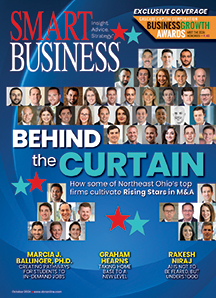
Ask 100 people and you’ll get 100 different answers as to what constitutes the “ideal employee.” Author Patty Inglish has boiled all of those down to these five characteristics: dependability, honesty and integrity, positive and proactive attitude, willingness to work, and someone who uses downtime productively.
As a business owner, where do you find such candidates? Try looking right under your nose.
They’re out there. There are millions of them. And they’re hungry for work. But many businesses overlook them. Many businesses dismiss them out of hand. Why? Only one reason — they’re 50 years old and older.
However, there is ample evidence to suggest that this demographic of worker — perhaps more today than ever before in history — can be the answer to what you seek. According to the Bureau of Labor Statistics, there are more than 4 million unemployed people between the ages of 45 and 64. That’s an enormous talent pool.
A 2007 McKinsey survey found that the baby boomer generation (those Americans born between 1946 and 1964 — now aged 47 to 65) is “not only is the best-educated, most highly skilled … work force in U.S. history but also accounts for a disproportionate share of U.S. ‘knowledge workers’ — 51 percent of all managers and 45 percent of all professional people, such as doctors and lawyers — while representing just 41 percent of the work force.”
Educated and skilled are both good. But what about the five characteristics? Consider these facts:
In 2007, the National Study of Business Strategy and Work force Development found early-career employees had a 20 percent higher absenteeism rate due to illness than late-career employees. The same study found that late-career employees were nearly 2.5 times more loyal to their companies than younger workers.
A 2010 Pew Research Center survey found that about three-fourths of respondents said that older people had better work ethic. The study also found that even younger workers — nearly seven in 10 — agree.
A 2009 Boston College survey of HR managers found that “late-career employees were perceived most positively … with regard to having low turnover rates, having a strong work ethic, being reliable and being loyal … in comparison to the early- and midcareer employees.”
Ask yourself this question: how expensive is it to train a new employee? The older worker has years or even decades of experience. The seasoned new hire can hit the ground running on day one as a productive, contributing member of your team.
Another often overlooked benefit of older workers is their professional databases. They know who the contacts are, how to find them, who’s good and who isn’t. And they won’t have to spend two or three days finding that out.
But if they’re already in their 50s, how long will they stay at their jobs? Funny you should ask. Articles in The Wall Street Journal, U.S. News, CNN online and others have all stated that the baby boomers, in huge numbers, are postponing their retirements by years. If you hire someone in their early 50s, there is a very high probability that that employee will be around for 20 years. Conversely, other studies have shown that younger workers are twice as likely to leave their jobs as older workers.
They have talent. They have experience. They have a superior work ethic. They have a deep reservoir of contacts. They don’t want — and aren’t ready — to be put out to pasture. They have all the makings of an ideal, long-term, productive and valuable employee.
They’re just a little gray around the temples.
Jim Tabaczynski is the Offensive Coordinator for the Nifty50s, an online job service for people 50 and older. He can be reached at: [email protected] or www.nifty50s.com.

